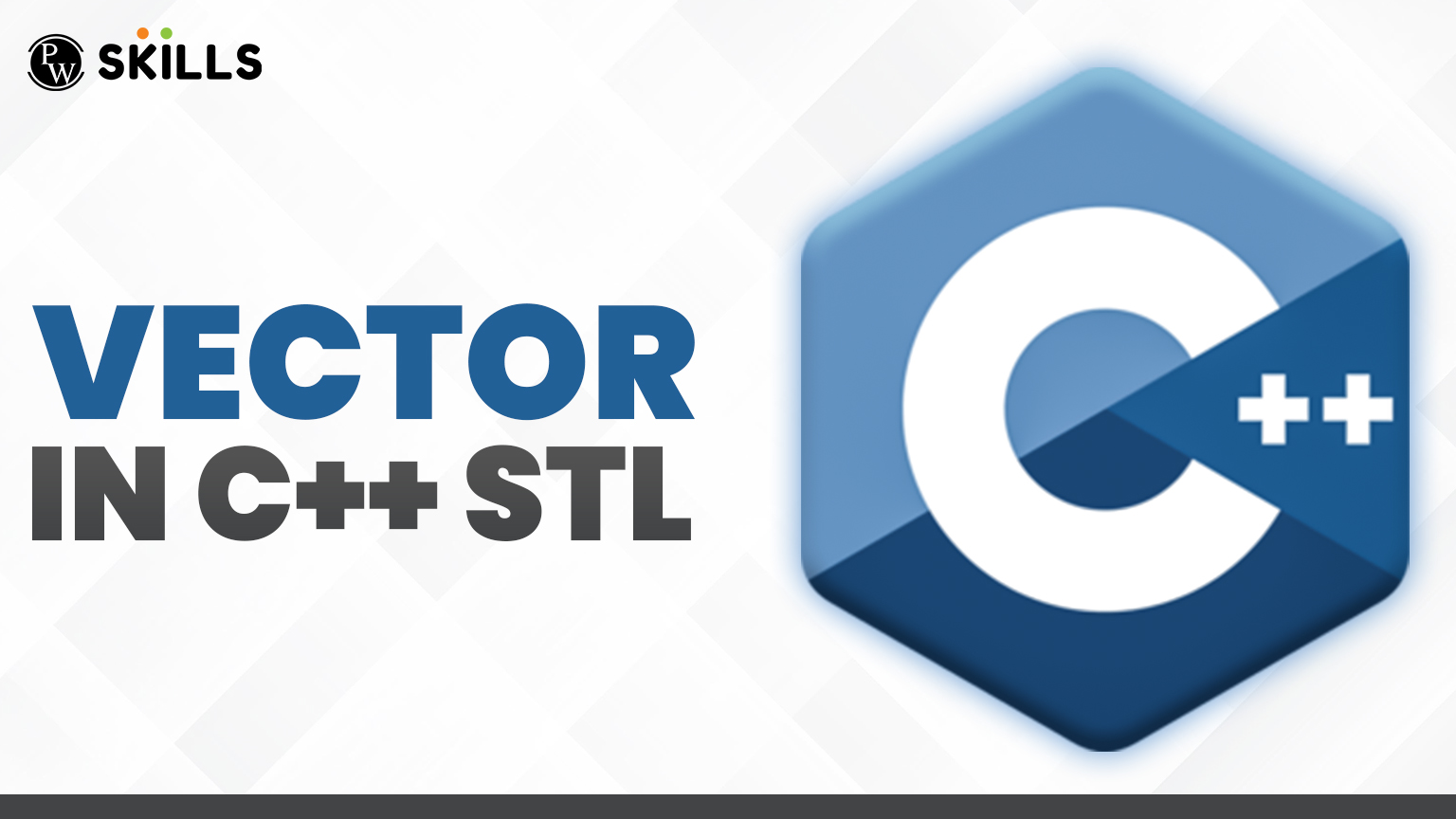Vector in C++ might be more suitable for beginners, as well as be increasingly important to intermediate learners who want to master C++ features. A simple Vector in a C++ program depicting a brief explanation about various uses of Vector, demonstrating native examples, and easy to connect to practicing programs will allow readers to comprehend and broaden the spectrum of Vector in C++ operations in terms of practicality, fresh code, simple explanations, and simple explanations for students and professionals alike.

What is Vector in C++? Understanding the Basics of Vector in C++
So, what is vector in C++ exactly? Essentially, it’s closer to being a dynamic array—a container that accommodates its elements being added or subtracted, as the case may be. In traditional arrays, the size should be known in advance. But with Vector in C++, you can start with it, filling its elements as long as they need to grow. This feature set includes suitability for data items with sizes yet to be determined.
OK, about declaring a very important vector in C++:
#include<iostream>
#include<vector>
int main()
{
std::vector<int> numbers; // Vector in C++ declaration
return 0;
}
This comes from the Standard Template Library (STL) Vector in C++, which provides predefined efficient reusable data structures.
Why Use Vector in C++ STL in Real-World Projects?
The Vector in C++ STL is all about application rather than theory. Whatever programming skills you apply, be it in C++ coding for a game, reading in data, or building a log management system, the class comes to your rescue due to the following favored advantages:
Auto resizing: In C++, you don’t have to tender over memory allocation.
Fast element access: Like every traditional C array, you can access elements by using their indices here.
Compatibility with STL algorithms: This is the place where the whole bunch of supplied, efficient data structures and algorithms comes into the picture when millions of problems are tackled using C++ Standard Library.
Then, vectors handle the memory behind the implementation and reduce bugs while improving performance.
Insert, Access, and Iterate a Vector in C++
Another great thing about Vectors in C++ is the ease with which they allow us to manipulate them. Just insert data by using .push_back() and work on it with a for loop or ranges.
std::vector<std::string> fruits;
fruits.push_back(“Apple”);
fruits.push_back(“Mango”);
// Iterating over vector
for (int i = 0; i < fruits.size(); i++) {
std::cout << fruits[i] << std::endl;
}The flexibility in Vectors makes it even more ideal for random data collection, wherein we never know what size the vector needs to get.
Sort a Vector in C++: Bringing a Little Order to the Chaos
Whenever the data one has begins to look mismanaged, it is time to apply sorting in C++. The STL conveniently sorts using the following lines of code:
#include <algorithm>
std::sort(numbers.begin(), numbers.end());
The sorting helps when you work on leaderboards, ranking systems, or any task whose operation depends on order. In fact, the ease of sorting is the major reason why Vectors in C++ are preferred over arrays in real-world coding.
Reverse a Vector in C++: Rewind Your Data
Sometimes you may just want to rewind and watch data in the opposite direction. This is how reverse vectors are done in C++:
std::reverse(numbers.begin(), numbers.end());
This is useful when you are doing any game development, backtracking problems, or so many things, such as the simple-sounding reverse-log printouts. The capability to reverse a Vector in C++ by one line stands out as a major time-saver.
Most Common Functions in Vector in C++ STL
Following are a few of the widely employed functions in the free vector:
- .size() – Returns the number of elements
- .empty() – Checks if the vector is empty
- .clear() – Removes all elements
- .insert() – Adds elements at specific positions
- .erase() – Removes elements from specific positions
How super these functions are at providing utility to vectors in C++ where some more elegant handling could create quite a debacle for programmers using manual dynamic arrays.
Performance and Memory Management in Vector in C++
Inside all that simple syntax, Vector in C++ deals with very complex matters-like dynamic memory management, double transporting, and melting capacity. For feeding capacity, when every available bite with an awkward, crossing heart is reached, it is the time to pull the triggers: new memory will be cast and elements will be copied, while deleting the used memory. It might sound heavy, but it is also optimized under the hood. Thus, only a minor difference in performance should be caused.
So you have been informed about how to grind small with Vector in C++. Then this should be clear: if a scrollbar progeny is to be conceived, one is to grasp this intrinsic knowledge and conceive so.
Real-World Use Cases Where Vector in C++ Makes a Difference
Let’s look at where you’ll actually use Vector in C++:
- In college projects, some of these examples include file parsers, basic games, and DSA problems.
- Professional use in simulations, caching systems, and configuration setups
- Interview problems in LeetCode or HackerRank
Then, once you have grasped the concepts about what a vector in C++ is, plus how to change the sort or reverse it, the opportunity to solve a host of real-world problems with bull’s-eye precision opens up in fast succession.
Vector in C++ vs Arrays: Which One Should You Use?
Here is one such comparative note:
Feature Vector in C++ Array
- Size flexibility: Yes No
- Memory handling Automatic Manual
- STL functions Available Not available
- Performance A bit lower Higher for static
If you run around doing competitive coding or building something dynamic, it’s nice to have Vector in C++ STL by your side.
Why You Should Master Vector in C++ Today
So, in essence, it’s necessary to learn about Vector in C++ when it is about covering data structures as a beginner or engaging in some tech interviews. It saves time, eradicates bugs, and complements code readability. An up-to-satisfaction grasp of insertions, sorting a vector in C++, or how to reverse may be a very welcome addition to your toolbox.
Make Vector in C++ your go-to solution for a dynamically sized array. Once you do, there’s no turning back.
Also Read:
- C++ Function: A Comprehensive Guide with Syntax and Code Examples
- C++ Pointers Explained for Beginners – Types, Usage & Advantages (2025 Insights)
- Variables in C++: Declaration, Initialization, Rules, and Reference Variables (2025 Variables)
- History Of C++ | Timeline (+Infographic), List Of Versions, & More
Upskill with PW Skills
Want to dive deeper into vectors and data structures the smart way? Join PW Skills’ DSA in C++ Course – designed for both students and working professionals. Learn with real-life examples, live doubt sessions, and top-notch mentors to become interview-ready and crack top tech roles.
Vector in C++ FAQs
Can Vector in C++ be resized manually?
Yes, using .resize(), you can manually increase the size of or reduce a vector in C++.
Is Vector in C++ thread safe?
No, Vector in C++ is not thread-safe, and thus mutex or other external locks need to be used if there are multiple threads accessing the vector.
Can you make a 2D Vector in C++?
Yes, you can declare it like vector matrix, which is useful for grids, matrices, and DP problems.

